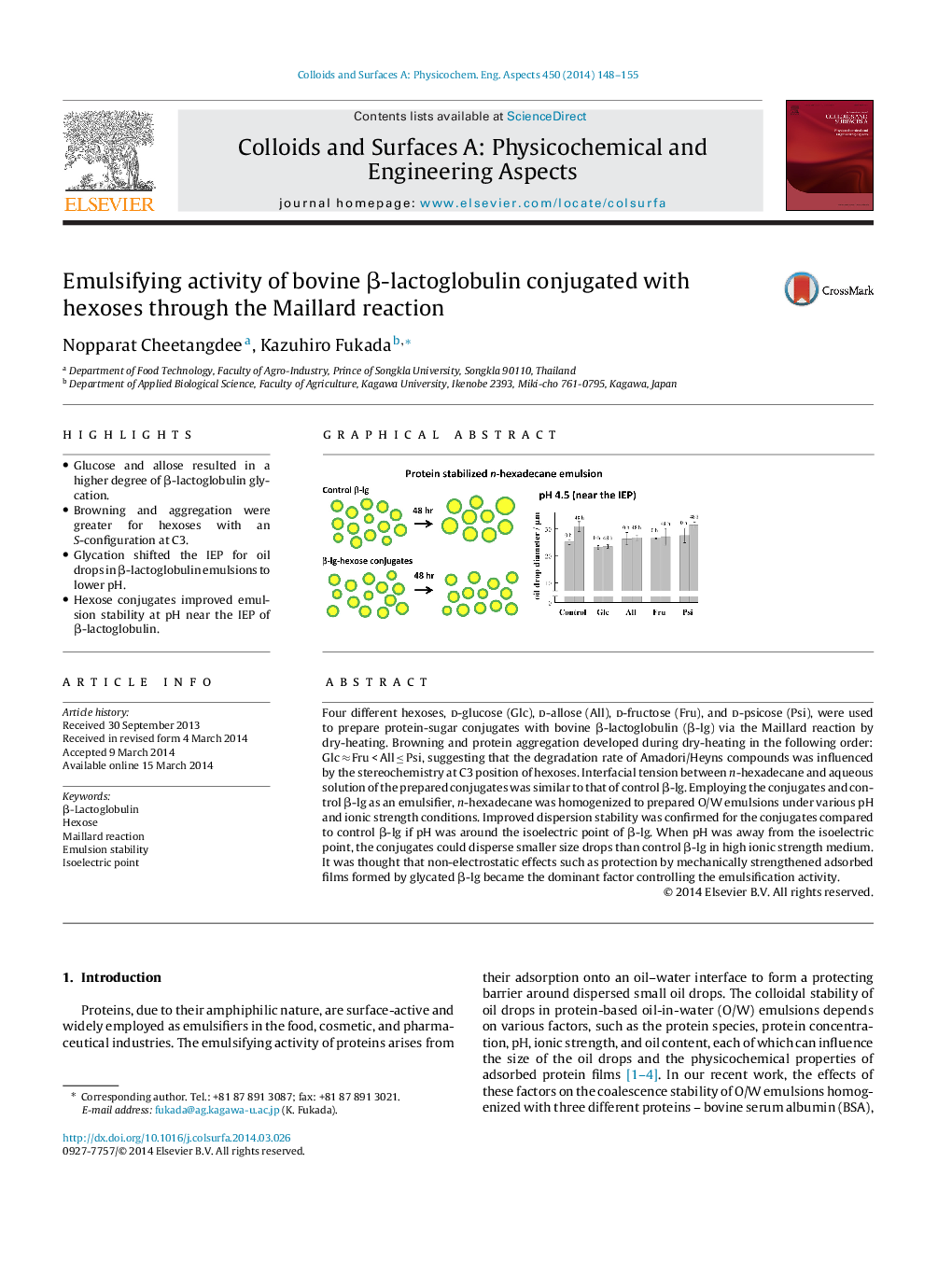| Article ID | Journal | Published Year | Pages | File Type |
|---|---|---|---|---|
| 592797 | Colloids and Surfaces A: Physicochemical and Engineering Aspects | 2014 | 8 Pages |
•Glucose and allose resulted in a higher degree of β-lactoglobulin glycation.•Browning and aggregation were greater for hexoses with an S-configuration at C3.•Glycation shifted the IEP for oil drops in β-lactoglobulin emulsions to lower pH.•Hexose conjugates improved emulsion stability at pH near the IEP of β-lactoglobulin.
Four different hexoses, d-glucose (Glc), d-allose (All), d-fructose (Fru), and d-psicose (Psi), were used to prepare protein-sugar conjugates with bovine β-lactoglobulin (β-lg) via the Maillard reaction by dry-heating. Browning and protein aggregation developed during dry-heating in the following order: Glc ≈ Fru < All ≤ Psi, suggesting that the degradation rate of Amadori/Heyns compounds was influenced by the stereochemistry at C3 position of hexoses. Interfacial tension between n-hexadecane and aqueous solution of the prepared conjugates was similar to that of control β-lg. Employing the conjugates and control β-lg as an emulsifier, n-hexadecane was homogenized to prepared O/W emulsions under various pH and ionic strength conditions. Improved dispersion stability was confirmed for the conjugates compared to control β-lg if pH was around the isoelectric point of β-lg. When pH was away from the isoelectric point, the conjugates could disperse smaller size drops than control β-lg in high ionic strength medium. It was thought that non-electrostatic effects such as protection by mechanically strengthened adsorbed films formed by glycated β-lg became the dominant factor controlling the emulsification activity.
Graphical abstractFigure optionsDownload full-size imageDownload as PowerPoint slide
